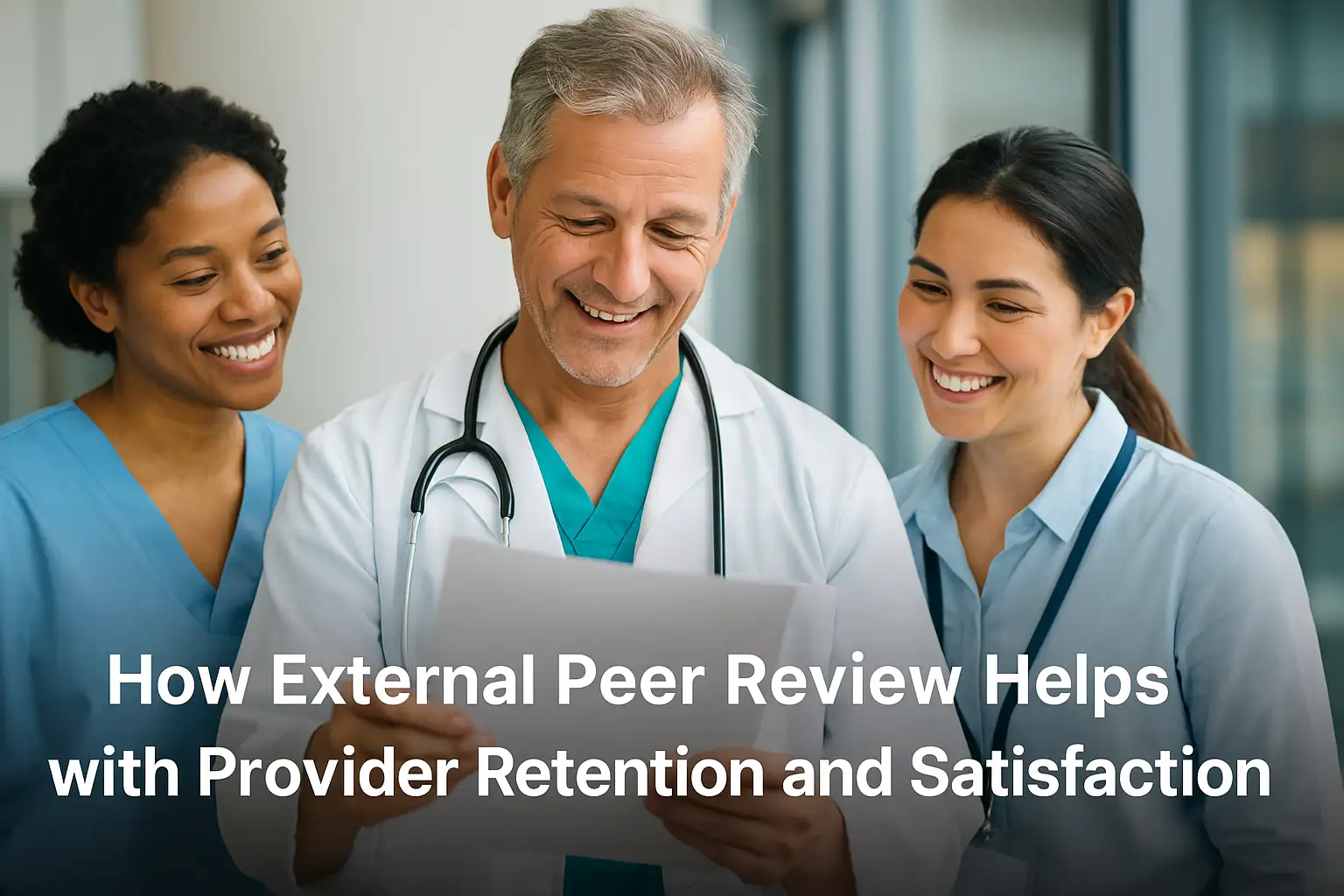
Table of Contents

How External Peer Review Helps with Provider Retention and Satisfaction
External peer review reduces provider burden, builds trust, and creates a fair culture that improves retention at FQHCs and CAHs.
In today’s healthcare landscape, particularly in underserved settings like Federally Qualified Health Centers (FQHCs) and Critical Access Hospitals (CAHs), provider satisfaction is more than a wellness metric — it’s a strategic imperative. These organizations often grapple with high turnover, provider burnout, and limited staffing. But one underutilized lever for improving morale and retention? External peer review.
Let’s explore how external peer review isn’t just a compliance exercise — it’s a tool for building trust, fairness, and satisfaction among your clinical staff.
1. Removing Internal Friction and Politics
Internal peer review processes often place providers in uncomfortable positions — reviewing the work of their colleagues, sometimes friends or adversaries. This dynamic introduces bias, even if unintended, and can create or exacerbate internal tension.
External reviewers eliminate this burden. They are impartial, specialized, and removed from internal dynamics. Providers no longer have to worry about "grading each other" or being unfairly scrutinized. This fosters a healthier and more collegial work environment.
2. Lightening the Administrative Load
Provider burnout is often tied to excessive administrative overhead. Internal reviews — from scheduling to documentation — add to that burden.
External peer review can dramatically reduce that load. Instead of pulling providers away from patient care to complete reviews, organizations can outsource the task. Reviews are returned in a structured, digestible format, freeing your team to focus on what matters: delivering care.
3. Reinforcing a Culture of Fairness
When peer review is handled externally, it’s easier to ensure consistency and fairness. Reviews are completed by clinicians with the right subspecialty experience and license level, using standardized tools and criteria.
This transparency builds trust. Providers feel more confident in the review process, knowing they’re being evaluated fairly and constructively — not based on politics, favoritism, or subjective opinions.
4. Providing Substantive, Educational Feedback
When reviews come from experienced specialists, they’re not just audits — they’re learning tools.
Providers want this. In fact, many clinicians eagerly read their reviews when they know the feedback is credible, relevant, and thoughtful. This kind of input can reinforce best practices, highlight areas for growth, and create a sense of professional development rather than punishment.
5. Supporting Long-Term Retention
Ultimately, external peer review contributes to a more stable and satisfied clinical workforce. It addresses several major drivers of dissatisfaction:
- Too much admin? Solved.
- Toxic review culture? Solved.
- Lack of recognition or fair critique? Solved.
Over time, this reduces turnover, strengthens team cohesion, and helps you build a workplace where providers feel supported — not surveilled.
Conclusion: A Tool for Culture, Not Just Compliance
External peer review is more than a checkbox for regulators. For FQHCs and CAHs, it’s a tool for building a sustainable, positive clinical culture. It protects your team’s time, respects their expertise, and helps them grow — all of which translate into better care for patients and better retention for your organization.

Value-Based Care for FQHCs: How External Peer Review Drives Better Outcomes and Sustainable Revenue
Medplace external peer review helps FQHCs thrive in value-based care. Gain objective insights, cut compliance risk, reduce admin burden, and boost quality, provider satisfaction, & revenue.
.png)
.png)

Addressing the Rural Workforce Shortage: Maintaining Quality of Care with Scalable External Peer Review
Combat rural healthcare shortages and maintain quality with scalable external peer review. Medplace offers objective, specialty-matched reviews, reducing burden and ensuring compliance.
.png)
.png)

Unlocking Rural Health Transformation Grants: Leveraging Peer Review for Measurable Quality Outcomes
Medplace's external peer review transforms rural health grant applications. Objective, specialty-matched insights enhance documentation, compliance, and measurable quality outcomes.
.png)
.png)



.png)
.png)
.png)


.png)




.png)